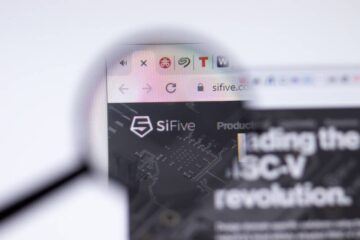
HPE has blamed disappointing revenue for the quarter on shortages of GPUs and warned investors its previous growth predictions probably won’t happen.
On Thursday the corp reported Q1 2024 revenue of $6.8 billion – a fourteen percent year-on-year dip.
CEO Antonio Neri opened the earnings call with references to beating profitability expectations and improved recurring revenue.
But he quickly admitted revenue “was lower than expected in large part because network and demand softened industry-wide and because the timing of several large GPU acceptances shifted. Additionally, we did not have the GPU supply we wanted, curtailing our revenue upside.” Neri revealed that GPU lead times are at least “20-plus weeks” – not only for Nvidia’s flagship H100 but previous generations of devices too.
Customers are committing to buy AI servers, leading to a growing order book. But Neri tempered the good news, explaining “GPU availability remains tight” and HPE has accumulated a $3 billion backlog.
Even when HPE can get its hands on the accelerators, customers aren’t ready to use them.
“Our delivery timing has also been affected by the increasing length of time customers require to set up the datacenter space, power and cooling requirements needed to run these systems,” Neri lamented.
AI server order conversion was therefore below expectations.
The networking market, according to Neri, saw weakened demand for campus kit – especially in the second half of the quarter. Customers are also “taking longer to digest prior orders than we had anticipated.”
The CEO told investors “We expect weakness in the networking market to persist, which is likely to impact revenue through fiscal year 2024.”
At this point, readers might wonder if, in that context, HPE’s planned acquisition of Juniper Networks is such a good idea.
Neri insisted it is, because increasing demand for inferencing workloads will create demand for new networks.
“That is one of the reasons why we’re so excited about our pending Juniper Networks acquisition,” Neri said. “Combining our complementary portfolios will supercharge HPE’s edge-to-cloud strategy, accelerating our entire portfolio with AI-enabled innovation. When our proposed acquisition closes, we will create a new networking innovator.
“The transaction is expected to double the size of our networking business, which will be the core foundation of covering the anticipated $180 billion market opportunity with our combined IP.”
That is, if customers get those datacenters ready to run GPUs, we presume.
A novel feature of HPE’s results this time around was reporting of revenue for a segment named “Server” – the result of a decision to merge its previous Compute and HPC & AI business segments. The segment produced one nice number of $3.4 billion revenue, plus a nasty number in the form of a 23 percent year-on-year dip. Neri wasn’t troubled by that decline, citing strong demand in most segments and explaining that the change will mean HPE can count all server purchases in one bucket – especially across the AI lifecycle as customers buy hardware suited to training, then turning, then inferencing.
He was pleased by 41 percent growth in annualized revenue, and margin growth.
But the CEO warned “the current environment will require continued discipline in how we execute,” and told investors “Improved cost management will remain an important competency for us in fiscal year 2024.”
HPE shares fell around five percent in after-hours trading, probably because the tech titan’s past guidance predicted $6.9 billion to $7.3 billion revenue for Q1, and its actual revenue missed even the lower figure by $100 million. Full-year guidance of revenue growth of between two and four percent was also trimmed, to somewhere between flat and two percent. ®
- SEO Powered Content & PR Distribution. Get Amplified Today.
- PlatoData.Network Vertical Generative Ai. Empower Yourself. Access Here.
- PlatoAiStream. Web3 Intelligence. Knowledge Amplified. Access Here.
- PlatoESG. Carbon, CleanTech, Energy, Environment, Solar, Waste Management. Access Here.
- PlatoHealth. Biotech and Clinical Trials Intelligence. Access Here.
- Source: https://go.theregister.com/feed/www.theregister.com/2024/03/01/hpe_q1_2024/
- :has
- :is
- :not
- $100 million
- $3
- $UP
- 2024
- 23
- 4
- 41
- 8
- 9
- a
- About
- accelerating
- accelerators
- According
- Accumulated
- acquisition
- across
- actual
- Additionally
- admitted
- affected
- AI
- All
- also
- an
- and
- annualized
- Anticipated
- ARE
- around
- AS
- At
- availability
- BE
- because
- been
- below
- between
- Billion
- book
- business
- but
- buy
- by
- call
- Campus
- CAN
- Can Get
- ceo
- change
- citing
- Closes
- CO
- combined
- combining
- committing
- complementary
- Compute
- context
- continued
- Conversion
- Core
- Corp
- Cost
- Cost Management
- count
- covering
- create
- Current
- Customers
- Datacenter
- decision
- Decline
- delivery
- Demand
- Devices
- DID
- Digest
- Dip
- disappointing
- discipline
- double
- Earnings
- earnings call
- Entire
- Environment
- especially
- Ether (ETH)
- Even
- excited
- execute
- expect
- expectations
- expected
- explaining
- Feature
- Figure
- Fiscal
- five
- flagship
- flat
- For
- form
- Foundation
- four
- generations
- get
- good
- GPU
- GPUs
- Growing
- Growth
- guidance
- had
- Half
- Hands
- happen
- Hardware
- Have
- he
- How
- hpc
- HTTPS
- idea
- if
- Impact
- important
- improved
- in
- increasing
- Innovation
- Innovator
- Investors
- IP
- IT
- ITS
- jpg
- kit
- large
- lead
- leading
- least
- Length
- lifecycle
- likely
- longer
- lower
- management
- Margin
- Market
- mean
- Merge
- might
- million
- missed
- most
- Named
- needed
- network
- networking
- networks
- New
- news
- nice
- novel
- number
- Nvidia
- of
- on
- ONE
- only
- opened
- Opportunity
- order
- orders
- our
- part
- past
- pending
- percent
- plato
- Plato Data Intelligence
- PlatoData
- pleased
- plus
- Point
- portfolio
- portfolios
- power
- predicted
- Predictions
- previous
- Prior
- probably
- Produced
- profitability
- proposed
- purchases
- Q1
- Quarter
- quickly
- RE
- readers
- ready
- reasons
- recurring
- references
- remain
- remains
- Reported
- Reporting
- require
- Requirements
- result
- Results
- Revealed
- revenue
- revenue growth
- Run
- s
- Said
- sales
- saw
- Second
- segment
- segments
- server
- Servers
- set
- several
- Shares
- shifted
- shortage
- shortages
- Size
- Slide
- So
- somewhere
- Space
- Strategy
- strong
- such
- Supercharge
- supply
- Systems
- T
- taking
- tech
- than
- that
- The
- Them
- then
- therefore
- These
- this
- those
- Through
- thursday
- time
- times
- timing
- titan
- to
- told
- too
- Trading
- Training
- transaction
- Turning
- two
- Unexpected
- Upside
- us
- use
- wanted
- warned
- was
- wasn
- we
- weakness
- Weeks
- when
- which
- why
- will
- with
- Won
- wonder
- year
- zephyrnet









